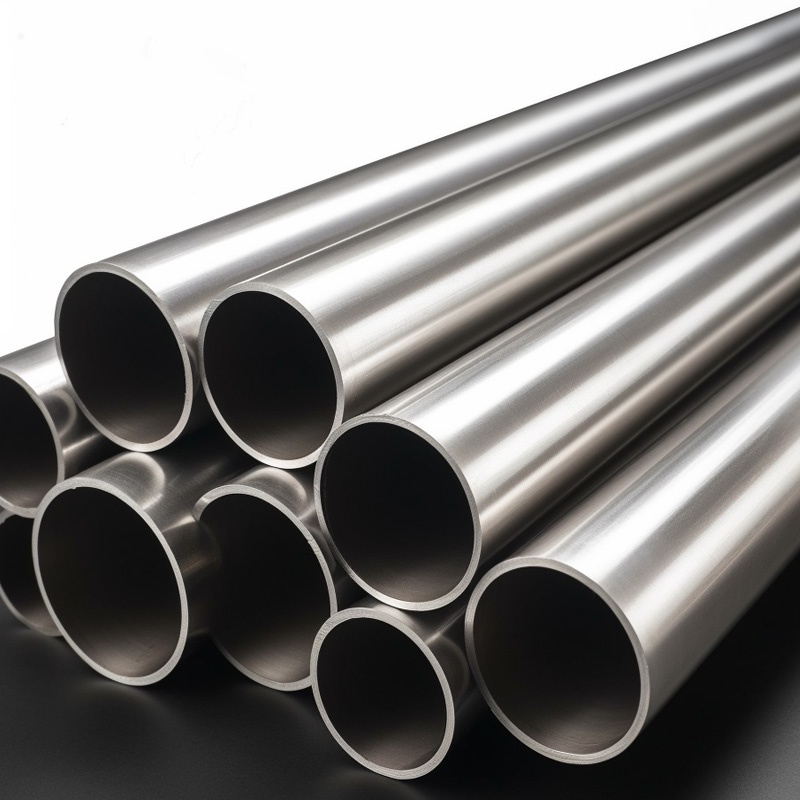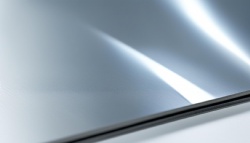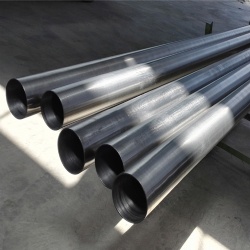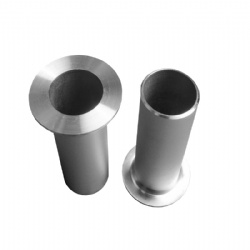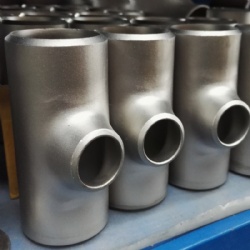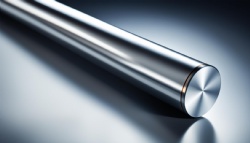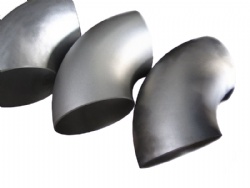Products >> Titanium >>
titanium application for MVR and MVC
- Product No.:2023121221645
The Use of Titanium in Mechanical Vapor Compression Applications
Advantages of Titanium in MVC Applications
Titanium and its alloys are well suited for a wide range of applications in the mechanical vapor compression (MVC) industry. Here are some of the advantages that titanium and its alloys offer in MVC applications:
Titanium is extremely strong and lightweight. This makes it an ideal material for use in MVC compressors, which need to be able to withstand high pressures and temperatures while remaining lightweight and portable.
Titanium is also highly corrosion-resistant. This is important in MVC applications, where corrosive chemicals are often used. Titanium alloys are even more corrosion-resistant than pure titanium, making them an ideal choice for use in MVC compressors.
Titanium has a very high melting point. This makes it an ideal material for use in MVC compressors, which need to be able to operate at high temperatures. Titanium alloys have even higher melting points than pure titanium, making them an even better choice for use in MVC compressors.
Finally, titanium is a very environmentally friendly material. It can be recycled easily, and it doesn't release harmful toxins into the atmosphere when it's used in MVC compressors.
Understanding the Mechanical Vapor Compression Process
The mechanical vapor compression (MVC) process is a thermal separation process that uses a heat exchanger and a mechanical compressor to remove water vapor from a gas stream. The process can be used to remove water vapor from air, nitrogen, natural gas, and other gases. The MVC process can also be used to remove other contaminants from gas streams, such as carbon dioxide, sulfur dioxide, and hydrogen sulfide. The MVC process is often used in industries such as food processing, chemical manufacturing, and power generation.
The MVC process begins with a gas stream that contains water vapor. The gas stream is passed through a heat exchanger, where it is cooled by a cold gas stream. The cooled gas stream is then passed through a compressor, where it is compressed by a mechanical device. The compressed gas stream is then passed through the heat exchanger, where it is warmed by the hot gas stream. The warmed gas stream is then passed through a condenser, where the water vapor is condensed and removed from the gas stream. Thecondensed water vapor is then collected and removed from the system.
The MVC process can be used to remove water vapor from air, nitrogen, natural gas, and other gases. The process can also be used to remove other contaminants from gas streams, such as carbon dioxide, sulfur dioxide, and hydrogen sulfide. The MVC process is often used in industries such as food processing, chemical manufacturing, and power generation.
Properties of Titanium that Make it Suitable for MVC Applications
When it comes to choosing the perfect metal for use in manufacturing, there are a few key considerations that come into play. For example, the required strength of the finished product, the weight of the finished product, the appearance of the finished product, and the overall cost of production. When it comes to meeting these requirements, titanium is often the perfect choice.
Titanium is one of the strongest metals in existence, making it ideal for products that need to be strong and durable. At the same time, titanium is much lighter than other strong metals, such as steel. This makes it ideal for products that need to be lightweight, such as aircraft or bicycles. Finally, titanium has a very distinctive appearance, which can give products a unique look.
Due to its unique combination of properties, titanium is often used in the manufacture of high-end products. For example, titanium is often used in the aerospace industry, as it is both strong and lightweight. It is also often used in the medical industry, as it is biocompatible and can be used in implants and other medical devices.
The manufacturing process of titanium is also relatively straightforward. Titanium can be easily formed into the desired shape using standard machining techniques. Additionally, titanium can be welded and brazed, which makes it easy to join titanium components together.
Overall, titanium is an excellent choice for a wide range of manufacturing applications. It is strong, lightweight, and has a unique appearance. Titanium is also relatively easy to work with, making it a good choice for both small-scale and large-scale manufacturing projects.
Benefits of Using Titanium in MVC Systems
Titanium is a widely used open source framework for building cross-platform mobile applications. Appcelerator, the company behind the Titanium framework, touts the many benefits of using Titanium in MVC systems.
The MVC (Model-View-Controller) pattern is a well-established software design paradigm that promotes separation of concerns and modular code. The Model layer contains the data and business logic, the View layer handles the presentation of the data, and the Controller layer mediates between the Model and View layers.
The Titanium framework follows the MVC pattern and provides a robust set of tools for each layer. In the Model layer, Titanium provides an object-oriented API for accessing data from a variety of sources, such as a SQLite database or a web service. The View layer is composed of XML files that define the UI layout and components. The Controller layer consists of JavaScript files that glue the Model and View layers together.
The benefits of using Titanium in MVC systems are numerous. First, Titanium promotes separation of concerns by clearly defining the responsibilities of each layer. This makes it easy to modularize your code and reuse components. Second, the use of XML in the View layer makes it easy to create complex UI layouts. Third, the JavaScript API is rich and flexible, making it easy to add custom behavior to your applications. Finally, Titanium applications can be compiled for multiple platforms from a single codebase, saving you time and effort.
If you're looking for a powerful framework for building cross-platform mobile applications, Titanium is a great choice. With its clear separation of concerns, rich API, and cross-platform capabilities, Titanium makes it easy to build sophisticated applications that run on multiple devices.
Considerations for Using Titanium in MVC
Titanium is a powerful open-source development framework that can be used to create cross-platform mobile applications. Titanium applications are written in JavaScript and can be run on a variety of devices, including iOS, Android, and Windows Phone.
When developing a Titanium application, you have the option to use either the Model-View-Controller (MVC) or the Model-View-ViewModel (MVVM) design pattern. In this blog post, we'll take a look at some of the considerations you should keep in mind when deciding which pattern to use for your Titanium app.
The Model-View-Controller (MVC) design pattern is the traditional approach to building web applications. In MVC, the application is divided into three distinct parts: the model, which represents the data; the view, which displays the data; and the controller, which handles the user input.
One of the main advantages of using MVC is that it allows for a clear separation of concerns between the different parts of the application. This makes it easier to maintain and extend the application, as well as reuse code between different parts of the app.
Another advantage of MVC is that it enables developers to create applications that can be easily unit tested. Unit testing is a process where individual parts of the code are tested to ensure that they work as expected. This is important for ensuring that the application is stable and bugs can be quickly fixed.
However, there are also some disadvantages to using MVC. One of these is that MVC can result in a lot of boilerplate code. This is code that is not specific to the business logic of the application and is instead used to wire together the different parts of the app. This can make the code more difficult to read and understand.
Another disadvantage of MVC is that it can be difficult to bind data to the view. This is because the view and the controller are typically tightly coupled. This can make it hard to change the way data is displayed without breaking the controller code.
The Model-View-ViewModel (MVVM) design pattern is an alternative to MVC that was originally developed for use with Microsoft's WPF (Windows Presentation Foundation) platform. In MVVM, the application is still divided into three distinct parts: the model, which represents the data; the view, which displays the data; and the view model, which acts as a 'bridge' between the view and the model.
One of the main advantages of MVVM is that it allows for a more declarative style of programming. This means that you can write code that is more concise and easier to read. It also makes it easier to bind data to the view, as the view model is not tightly coupled to the view.
Another advantage of MVVM is that it enables developers to create applications that can be easily unit tested. Unit testing is a process where individual parts of the code are tested to ensure that they work as expected. This is important for ensuring that the application is stable and bugs can be quickly fixed.
However, there are also some disadvantages to using MVVM. One of these is that MVVM can result in a lot of code duplication. This is because the view model often contains a copy of the data that is stored in the model. This can make the code more difficult to maintain.
Another disadvantage of MVVM is that it can be difficult to bind data to the view. This is because the view model and the view are often tightly coupled. This can make it hard to change the way data is displayed without breaking the view model code.
Comparing Titanium to Other MVC Materials
When it comes to building web applications, there are a lot of different MVC materials out there.Each one has its own set of benefits and drawbacks. So, how does Titanium stack up against the competition?
First, let's take a look at some of the most popular MVC materials:
- ASP.NET MVC: A Microsoft framework that is designed for building web applications on the .NET platform.
- Ruby on Rails: A popular open source framework that is written in Ruby.
- Django: Another popular open source framework that is written in Python.
- Laravel: A PHP framework that has gained a lot of popularity in recent years.
So, what are the benefits of Titanium?
One of the biggest benefits of Titanium is that it is cross-platform. This means that you can write your code once and deploy it to multiple platforms, including web, iOS, and Android.
Another big benefit of Titanium is that it has a very active community. There are a lot of people using Titanium and contributing to the project, which means that there are always new features and improvements being made.
Finally, Titanium is a very flexible framework. It doesn't force you to use a particular coding style or structure, which means that you can really make your application your own.
Of course, Titanium also has its drawbacks. One of the biggest is that it can be difficult to find good documentation. Because Titanium is so flexible, there is often more than one way to do things, which can make it hard to know which way is the best way.
Another drawback of Titanium is that it can be challenging to debug applications. Because Titanium compiles to native code, it can be difficult to figure out what is going on if something goes wrong.
So, what is the bottom line?
Titanium is a great framework for building web applications. It has a lot of benefits, but it also has some drawbacks. You will need to weigh the pros and cons to decide if Titanium is right for you.
Contact Us

Name: Mr. Ren
Tel: +86-18292471213
E-mail: info(at)intemetal.com
Add: Middle Section Baotai Road, Weibin District, 721013, Baoji, Shaanxi Province, China




